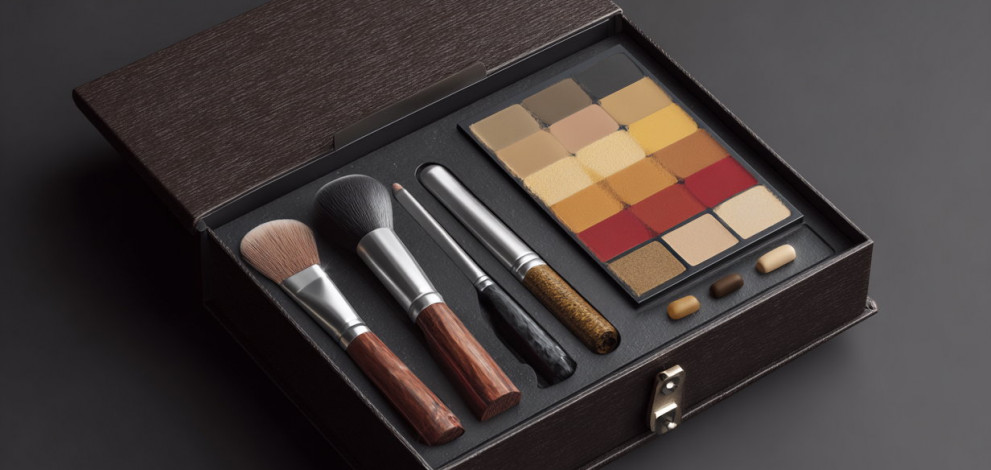Choosing the right makeup base is a crucial makeup must-have. Check this guide to know what you need to make or break your look.
If you are a makeup enthusiast, you would agree that makeup is an art, and you must have a strong canvas for it! The fact is, that your makeup base can make or break your look. A flawless primer or foundation doesn’t just enhance your features, it creates a smooth, radiant canvas for everything else after that. A perfect base can prevent your makeup from melting down during rain or sweltering summer heat. However, picking up the right makeup base for your skin is not as easy as it sounds.
Moreover, with so many options in the beauty aisle, choosing the right makeup base can feel overwhelming. It is definitely not as easy as picking up the very first bottle you see on the counter. The secret lies in understanding your skin, your preferences, and how a base performs in different conditions.
Here’s a step-by-step guide to help you find your perfect match.
Know your skin type
Your skin type decides not just the finish of your base, but also its longevity and comfort.
Oily Skin: People with oily skin types often find it the hardest to find a perfect base. The trick is to go for oil-free, matte-finish foundations. They control shine and stay in place longer.
Dry Skin: The makeup base on dry skin often looks cakey. Hence, choose a hydrating, dewy-finish base. Ingredients like hyaluronic acid or glycerin keep skin plump and smooth.
Combination Skin: For people with combination skin types, a satin or semi-matte foundation works best as it balances shine and dryness.
Sensitive Skin: As people with sensitive skin cannot just apply anything on their skin for obvious skin allergy reasons, it’s advisable for them to opt for fragrance-free, dermatologist-tested formulas to avoid any skin irritation.
Find your undertone
The right undertone ensures your foundation looks natural, not chalky or ashy. To know your undertone, check your veins, greenish veins usually mean warm undertones; bluish veins mean cool; a mix suggests neutral.
Cool Undertones: Your skin has pink, red, or blue hues. Silver jewellery flatters you more. Choose bases with rose or cool beige tones.
Warm Undertones: Your skin leans golden, yellow, or peachy. Gold jewellery looks best. Pick foundations with golden or warm beige tones.
Neutral Undertones: You’re a mix of both, and most shades suit you. Look for “neutral” labelled shades.
Test in natural light
Store lighting can often be misleading. So, it’s always advisable to test your foundation in daylight for true colour payoff.
The trick is to apply swatches on your jawline, and not your hand or wrist.
Blend and let it sit for a few minutes, foundations can oxidize and darken slightly.
The right shade should disappear seamlessly into your skin.
Choose the right coverage
Coverage depends on your style and skin needs. It is recommended to start light; you can always build coverage where needed.
Sheer Coverage: A sheer coverage is always perfect for a natural, “no-makeup” look. Works best on even-toned skin.
Medium Coverage: Balances between natural and glam—ideal for daily wear.
Full Coverage: Best for concealing blemishes, pigmentation, or redness. Perfect for events and photography.
Consider your finish
Your desired finish affects the overall vibe of your makeup.
Matte: Reduces shine, ideal for oily skin or humid climates.
Dewy/Glowy: Adds radiance and youthfulness, great for dry or dull skin.
Satin: A balanced, skin-like finish that suits all skin types.
Match to your neck, not just your face
Many of us pick a shade that matches our face but forget the neck, leading to a visible colour difference. It’s advisable to always ensure the shade blends well from face to neck for a natural, unified look.
Consider the weather conditions
Your local weather can change how your makeup behaves.
Hot & Humid: Lightweight, sweat-proof, matte formulas work best.
Cold & Dry: Hydrating, creamy bases prevent flakiness.
Don’t forget primers
A good base starts with proper prep. Primers smooth the skin, control oil, and extend wear time.
For oily skin, use a mattifying primer.
For dry skin, choose a hydrating primer.
For large pores, go for a blurring or pore-filling primer.
Invest in good blending tools
It’s not just about choosing the right base, but the right tool to apply it as well. Your foundation finish also depends on how you apply it.
Brushes: Give medium to full coverage with a polished look.
Sponges: Offer an airbrushed finish—ideal for blending seamlessly.
Fingers: Good for sheer coverage and warming up cream products.
Final Thought
The perfect makeup base isn’t just about finding the right shade, it’s about choosing something that works with your skin type, undertone, lifestyle, and climate. Experiment, test in natural light, and don’t hesitate to mix formulas for your unique needs.
When your base feels like a second skin, you know you’ve found the one.


